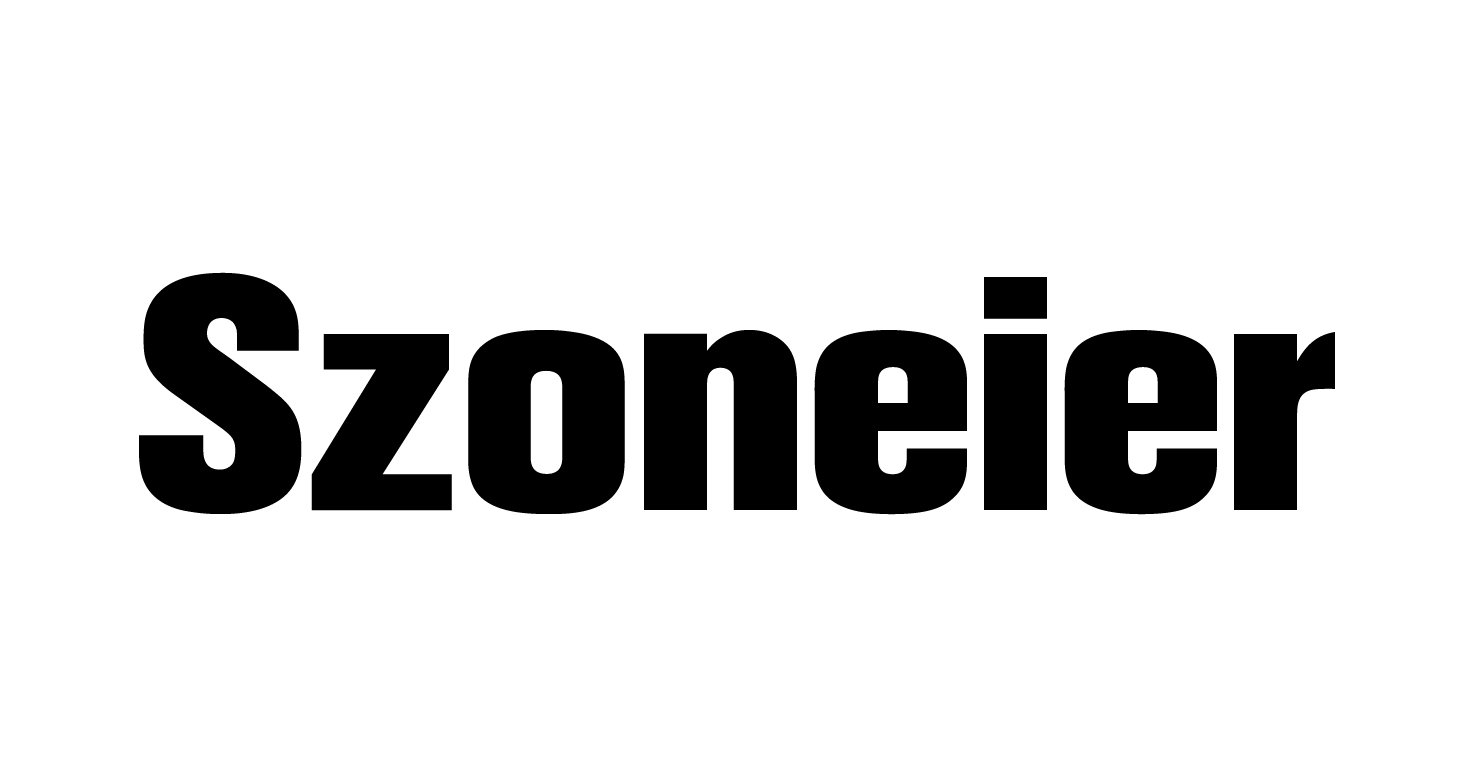Textile certifications like OEKO-TEX Standard 100 and GOTS (Global Organic Textile Standard) are now essential for brands that want to prove safety, sustainability, and compliance. Yet manufacturers often ask the same question: Is cotton or polyester easier to get certified? Cotton generally aligns more naturally with GOTS due to its organic farming roots, while polyester often certifies faster under OEKO-TEX because it involves fewer agricultural variables and focuses mainly on chemical safety. However, final outcomes depend on fiber sourcing, finishing processes, and documentation readiness across the entire supply chain.
Imagine a sourcing manager racing against a product launch deadline: a delayed GOTS certificate for cotton fabrics can halt shipments for weeks, while OEKO-TEX on polyester passes smoothly in days. This article dives into real-world data, certification costs, and case studies to help decision-makers build smarter compliance strategies.
What Are the Core Differences Between OEKO-TEX and GOTS Scope, Fiber Eligibility, and Labeling Levels?

When evaluating textile certifications, two of the most recognized standards are OEKO-TEX Standard 100 and the Global Organic Textile Standard (GOTS). Although both play vital roles in ensuring textile safety and sustainability, their scope, fiber eligibility, and labeling systems are very different. Brands and manufacturers need to understand these differences to align their sourcing and compliance strategies with market demands and consumer expectations.
GOTS focuses on organic fibers, environmental impact, and social criteria across the entire supply chain, while OEKO-TEX primarily tests finished textiles for harmful substances. Cotton qualifies for both, but only organic cotton meets GOTS requirements. Polyester can be OEKO-TEX certified for chemical safety but cannot qualify under GOTS unless it is recycled and integrated into approved sustainable supply chains.
Certification Scope: Safety vs. Sustainability
The most fundamental difference between the two certifications lies in their scope:
- OEKO-TEX Standard 100: Primarily a product safety certification, OEKO-TEX tests finished textiles for harmful chemicals and verifies that they are safe for human use. The focus is on the absence of toxins, such as formaldehyde, pesticides, heavy metals, or carcinogenic dyes. It does not require the fibers to be organic or sustainably produced.
- GOTS (Global Organic Textile Standard): Goes far beyond product safety, serving as a comprehensive environmental and social standard. GOTS certification requires textiles to contain organic fibers (cotton, wool, flax, etc.) and ensures compliance with strict requirements on chemical inputs, wastewater treatment, labor rights, and traceability from farm to factory.
Fiber Eligibility: Who Qualifies?
One of the most significant differences between the two standards is the type of fibers each accepts:
- OEKO-TEX: Open to all fiber types, including natural, synthetic, and blended textiles. This means polyester, nylon, acrylic, and even coated fabrics can qualify for certification as long as they meet chemical safety thresholds.
- GOTS: Restricted to organic natural fibers. To qualify, at least 70% of the material must be certified organic fibers. Polyester, in its virgin form, cannot be certified under GOTS. However, recycled polyester may be accepted if it is used alongside organic fibers and the entire production process meets GOTS environmental and social criteria.
Environmental and Social Standards
The environmental and social dimensions are where GOTS clearly outpaces OEKO-TEX:
- OEKO-TEX: While Standard 100 is limited to harmful substance testing, extended OEKO-TEX programs like STeP (Sustainable Textile Production) and Made in Green cover aspects of sustainable production, workplace conditions, and supply chain transparency. However, these are optional add-ons.
- GOTS: Environmental and social standards are mandatory. Certified facilities must adhere to wastewater treatment protocols, restrictions on toxic dyes and finishes, and ethical labor practices (including no child labor, fair wages, and safe working conditions). For eco-conscious buyers, this holistic scope makes GOTS more attractive than OEKO-TEX alone.
Labeling Levels: How Products Are Marketed
Another important distinction lies in how certified products can be labeled:
- OEKO-TEX Standard 100: Labeling is divided into Product Classes I–IV depending on the end-use (e.g., baby clothes require the strictest limits). The OEKO-TEX label assures consumers that the final textile product is tested for harmful substances.
- GOTS: Labeling is tied to organic fiber content:
- “Organic” (Label 1): ≥95% certified organic fibers.
- “Made with Organic” (Label 2): ≥70% certified organic fibers. This dual-level labeling system provides transparency and market differentiation for products with varying organic content.
Case Study: European Kidswear Brand
A European kidswear brand illustrates the practical differences:
- Problem: The brand wanted to market baby garments with strong safety and sustainability credentials.
- OEKO-TEX Path: Certification was completed within 3 weeks, as the focus was purely on chemical testing of finished products.
- GOTS Path: Required organic cotton sourcing records, transaction certificates, and factory audits, extending the timeline to nearly 3 months.
The result? OEKO-TEX provided a fast compliance win, while GOTS built long-term trust with eco-conscious parents who value full supply chain traceability.
Perspectives
From the viewpoint of industry professionals, both certifications offer value—but for different goals:
- Compliance Managers: Appreciate OEKO-TEX for synthetics and blends, since it allows polyester and nylon fabrics to be marketed as safe without farm-level audits.
- Sustainability Directors: Prefer GOTS for natural fibers, because it integrates environmental and social dimensions, resonating more with environmentally-conscious consumers.
- Marketing Teams: Recognize that GOTS carries higher consumer recognition in the organic apparel segment, while OEKO-TEX is well known in mainstream textiles.
Some argue that OEKO-TEX is easier and faster, while GOTS delivers deeper credibility, especially in organic fashion.
The core differences between OEKO-TEX and GOTS come down to scope, fiber eligibility, and labeling. OEKO-TEX offers a universal chemical safety guarantee for any fiber type, including synthetics, making it practical for polyester-heavy industries. GOTS, however, provides a farm-to-factory sustainability framework, covering organic content, environmental safeguards, and social responsibility.
For brands, the choice often depends on fiber mix and consumer positioning:
- OEKO-TEX is the go-to for fast certification and synthetic textiles.
- GOTS is essential for organic cotton and eco-conscious branding.
Both can coexist in a certification strategy, with OEKO-TEX covering safety assurance and GOTS delivering sustainability credentials.
Which Fiber—Cotton or Polyester—Aligns More Naturally With Each Standard’s Requirements?
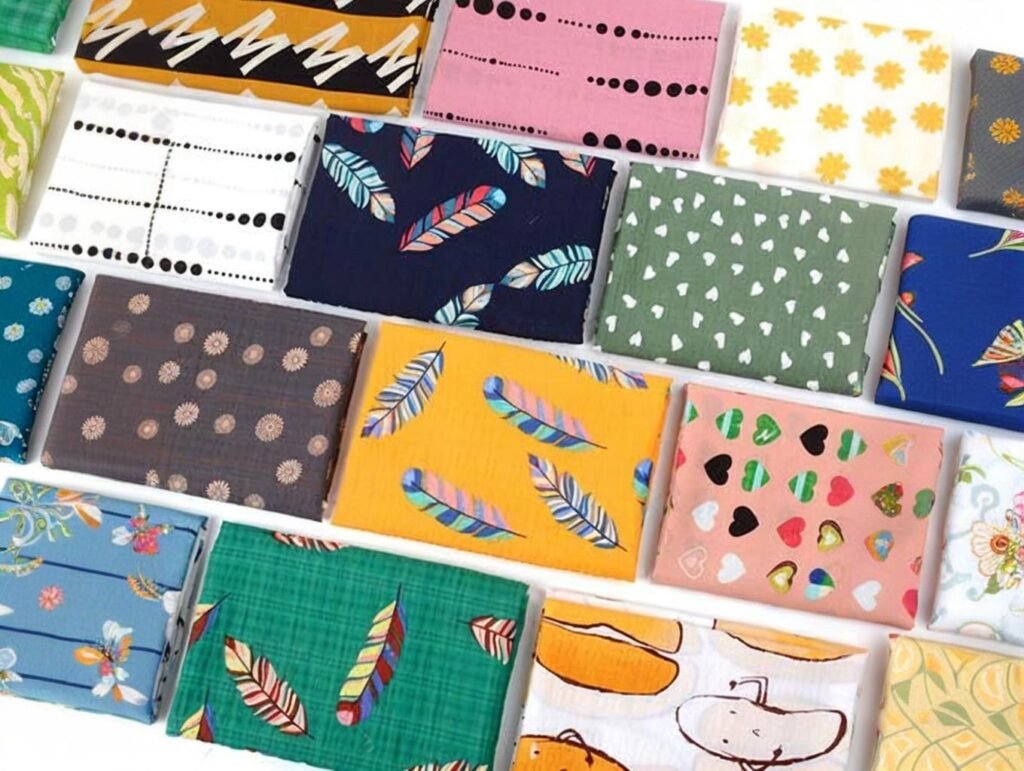
Certification frameworks such as GOTS (Global Organic Textile Standard) and OEKO-TEX® Standard 100 play central roles in determining how fibers are judged for sustainability, safety, and compliance. However, not all fibers align equally well with each certification. The alignment depends largely on the origin of the fiber, the criteria emphasized by the standard, and the end-use context in which the fiber is applied. Cotton aligns naturally with GOTS because the standard was designed around organic agriculture and natural fiber sustainability. Polyester, being synthetic, aligns better with OEKO-TEX, focusing on chemical residue limits rather than farming or social criteria.
A. Fiber vs Certification Compatibility
The table below summarizes how different cotton and polyester variants align with the two major standards:
| Fiber Type | OEKO-TEX Certification Fit | GOTS Certification Fit | Typical Use Cases |
|---|---|---|---|
| Organic Cotton | Meets OEKO-TEX easily, due to low chemical residues | Directly eligible if certified organic | Apparel, babywear, home textiles |
| Conventional Cotton | Eligible under OEKO-TEX | Not eligible unless grown organically | Mass-market fashion, uniforms |
| Polyester (Virgin) | Readily compliant (chemical testing focus) | Not eligible | Sportswear, outerwear, furnishings |
| Recycled Polyester | OEKO-TEX + GRS (Global Recycle Standard) can apply | Limited acceptance under GOTS | Eco-sportswear, accessories, recycled blends |
Key Insight:
- Organic cotton flows naturally into GOTS because the standard is built around organic farming, fair labor, and ecological processing.
- Polyester, whether virgin or recycled, has no agricultural link; therefore, it typically falls outside GOTS, instead relying on OEKO-TEX and supplementary certifications like GRS or Higg Index to demonstrate sustainability.
B. Real-World Case: U.S. Sportswear Brand
A U.S.-based sportswear company pursued certifications for both its cotton and polyester product lines:
- Polyester: Passed OEKO-TEX certification within 4 weeks, as testing mainly covered chemical safety, dye residues, and heavy metals. This was relatively straightforward for its synthetic supply chain.
- Cotton: The brand faced a longer certification timeline for GOTS. It required organic sourcing verification, farm audits, and supply chain traceability, extending the process by several months.
This illustrates how natural fibers like cotton face stricter farming and social compliance scrutiny, whereas synthetic fibers move through chemical safety tests more quickly.
C. Environmental Viewpoint
- Cotton (Organic): Sustainability advocates prefer organic cotton, despite higher production costs and certification hurdles, because it reduces pesticide use and builds consumer trust in eco-sensitive markets.
- Polyester: Even when OEKO-TEX certified, polyester faces criticism for its fossil fuel origin and microplastic shedding. However, recycled polyester is gaining traction, especially when paired with GRS certification, as it reduces waste and appeals to eco-conscious buyers.
D. Human-Centered Perspective
- Eco-Sensitive Markets (EU, Japan): Buyers strongly prefer GOTS-certified organic cotton, especially for babywear, intimate apparel, and home textiles, where consumer trust and natural credentials are paramount.
- Fast-Fashion and Performance Markets: Brands producing sportswear, outerwear, and high-volume apparel lean toward OEKO-TEX-certified polyester. The quicker certification process allows faster product launches while meeting consumer safety expectations.
- Cotton → Best Fit with GOTS: Organic cotton integrates seamlessly with GOTS because the standard addresses agriculture, social conditions, and ecological processing.
- Polyester → Best Fit with OEKO-TEX: Polyester, being synthetic, is better suited to OEKO-TEX, which emphasizes chemical safety and residue limits, not farming origins.
For brands balancing both fibers, a dual-certification strategy—GOTS for natural cotton lines and OEKO-TEX (plus GRS for recycled polyester) for synthetic lines—offers the clearest pathway to consumer trust and global compliance.
How Do Testing Protocols, Chemical Limits, and Restricted Substance Lists Compare for Cotton vs Polyester?
Textile certification frameworks like OEKO-TEX and GOTS (Global Organic Textile Standard) establish strict requirements for chemical safety, sustainability, and consumer protection. While both cotton and polyester must undergo rigorous testing for harmful substances, the scope and stringency vary because of the different production processes. Cotton is subject to tighter rules on agricultural inputs and wet processing, while polyester faces scrutiny over finishing agents such as water repellents.
For OEKO-TEX, both cotton and polyester undergo identical chemical tests for harmful residues like formaldehyde, heavy metals, and azo dyes. GOTS, however, sets stricter limits on input chemicals, wastewater treatment, and processing auxiliaries, particularly for cotton due to its agricultural origin and frequent use of bleaching, dyes, and finishes. Polyester typically clears OEKO-TEX faster since it involves fewer variable inputs.
A. Chemical Limits Comparison Table
| Parameter | OEKO-TEX Standard 100 Limits | GOTS Limits & Processing Rules | Cotton vs Polyester Impact |
|---|---|---|---|
| Formaldehyde (ppm) | ≤ 75 (Babywear ≤ 20) | ≤ 16 (all categories) | Cotton bleaching → Higher Risk |
| Azo Dyes (Amine Release) | Banned | Banned | Equal impact |
| Heavy Metals (Pb, Cd, Hg, Cr6+) | Strict limits | Strict limits | Equal impact |
| PFCs / Water Repellents | Banned unless fluorine-free approved | Mandatory fluorine-free alternatives | Polyester finishes → Higher Risk |
| GMOs / Organic Inputs | Not applicable | GMO-free certification mandatory for cotton | Cotton only |
| Wastewater Treatment | Recommended under STeP by OEKO-TEX | Mandatory for all wet-processing facilities | Cotton → More water-intensive |
Key differences:
- Formaldehyde: GOTS is far stricter than OEKO-TEX, reflecting concerns around babywear and skin-contact textiles.
- GMOs: Only relevant for cotton, not polyester.
- PFC bans: Polyester is more affected due to durable water repellent (DWR) finishes.
- Wastewater rules: GOTS makes treatment mandatory, impacting cotton mills with heavy wet-processing.
B. Real-World Example: Indian Knitting Mill
An Indian knitting mill pursuing both certifications found the difference in timelines striking:
- OEKO-TEX Standard 100 certification was achieved in 4 weeks, since only residual chemical testing was required.
- GOTS certification took 12 weeks, requiring an on-site audit, wastewater treatment upgrades, and organic input verification.
This shows how polyester mills can achieve OEKO-TEX relatively quickly, while cotton facilities must invest in supply chain traceability and environmental infrastructure.
C. Perspectives
- Chemical Engineers argue OEKO-TEX is a fast market-entry tool, as it tests only the final fabric residues, while GOTS enforces stricter rules covering all stages of production.
- Sustainability Advocates note GOTS offers stronger environmental credibility since it mandates input controls, wastewater treatment, and ecological processing aids.
- Factories often pursue OEKO-TEX first, then upgrade to GOTS when targeting premium markets like babywear, home textiles, or organic fashion.
D. Human-Centered Viewpoint
- Babywear and Home Textiles Buyers: Prefer GOTS-certified cotton due to tighter chemical limits and traceability.
- Fast-Fashion Brands: Often rely on OEKO-TEX-certified polyester because it’s faster, cheaper, and widely accepted by global retailers.
- Hospitality & Healthcare Buyers: Typically require OEKO-TEX certification for polyester uniforms, bedding, and curtains to ensure safe skin contact without the added cost of GOTS compliance.
In summary: Cotton is subject to stricter GOTS requirements (due to agricultural and wet-processing risks), while polyester clears OEKO-TEX more easily (fewer inputs, fewer variable risks). For brands, the choice often depends on whether speed-to-market (OEKO-TEX) or sustainability credibility (GOTS) is the driving factor.
What Supply-Chain Documentation Is Required (Farm/GIN → Mill → Garment) and How Does It Differ by Fiber?
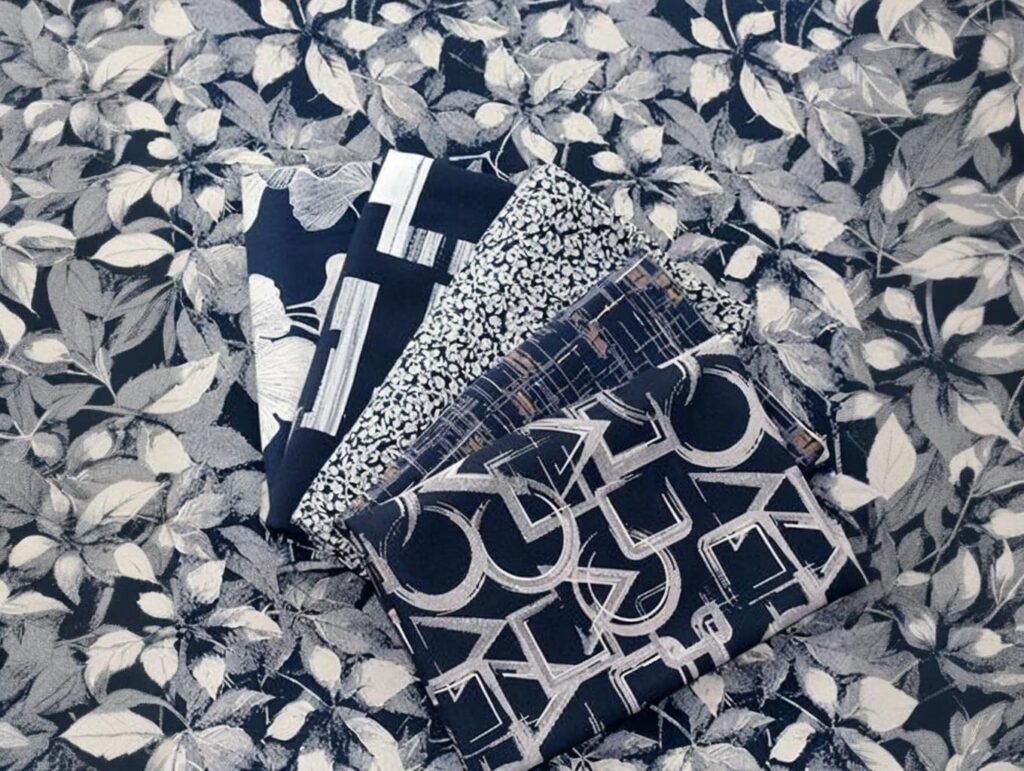
In global textile sourcing, supply-chain documentation ensures transparency, traceability, and compliance with sustainability standards. However, the type and volume of required documents vary greatly depending on the fiber (e.g., cotton vs. polyester) and the certification system being followed. For natural fibers like cotton, standards such as GOTS (Global Organic Textile Standard) demand documentation at every stage from farm to garment. For synthetic fibers like polyester, certification under OEKO-TEX or similar schemes focuses mainly on chemical testing and factory-level audits rather than upstream traceability.
GOTS requires farm-level certificates, transaction certificates (TCs), and chain-of-custody documentation at each stage (ginning, spinning, weaving, dyeing, finishing, garmenting). OEKO-TEX, by contrast, primarily audits factories handling finishing and garment production, meaning polyester supply chains often pass certification faster due to fewer required documents.
A. Documentation Requirements by Stage
| Certification Stage | Cotton (GOTS) Required Docs | Polyester (OEKO-TEX) Required Docs |
|---|---|---|
| Farm Level | Organic farming cert (IFOAM, USDA Organic) | Not required |
| Ginning & Spinning | TCs for each batch transfer | Not required |
| Weaving / Knitting | TCs + Process chemical inventories | Process chemical safety sheets |
| Dyeing & Finishing | Wastewater treatment reports + chemical inputs | Chemical inputs + residue testing |
| Garmenting | Final product TCs + Social compliance audits | Factory audit reports (optional under STeP) |
| Annual Re-certification | All stages re-verified annually | Annual lab tests for harmful substances |
Key Takeaway: Cotton under GOTS requires full farm-to-garment traceability through transaction certificates, while polyester under OEKO-TEX is primarily assessed at processing and finishing stages, with a strong focus on chemical safety.
B. Case Study: Turkish Organic Cotton Supplier
A Turkish supplier producing both organic cotton and polyester-blended fabrics illustrates the contrast:
- GOTS Audit: The cotton program required 16 transaction certificates (TCs) to document each stage—from farm to ginning, spinning, weaving, dyeing, and garmenting.
- OEKO-TEX Audit: For the polyester program, only 4 chemical safety reports covering the finishing and garmenting stages were needed.
This case demonstrates the higher administrative burden of GOTS compared to OEKO-TEX, but also the stronger assurance of traceability for cotton.
C. Time & Cost Comparison
| Fiber & Standard | Avg. Time (Weeks) | Typical Cost (USD) | Key Cost Drivers |
|---|---|---|---|
| Cotton – GOTS | 10–14 | $3,000–$6,000 | Farm audits, wastewater upgrades |
| Cotton – OEKO-TEX | 3–5 | $1,500–$3,000 | Lab testing, limited factory audits |
| Polyester – OEKO-TEX | 3–4 | $1,200–$2,500 | Chemical testing only |
| Polyester – GOTS | Not applicable | Not applicable | GOTS excludes virgin polyester |
Insight: GOTS certification for cotton is both more time-consuming and costly, driven by the need for farm-level auditing and stricter chemical controls. Polyester, being a synthetic, avoids farm-level documentation and passes certification faster.
D. Perspectives
- Sustainability Consultants: Argue that GOTS’ documentation-heavy process forces brands to build long-term supplier partnerships, ensuring better traceability and accountability.
- Fast-Fashion Brands: Prefer OEKO-TEX because its faster audit process aligns with short lead times in seasonal fashion cycles.
- Buyers in Healthcare & Workwear: Often demand both certifications—GOTS for organic cotton blends and OEKO-TEX for polyester—to balance traceability with chemical safety compliance.
For cotton, GOTS certification demands a fully documented chain-of-custody from farm to garment, ensuring maximum transparency but at higher cost and administrative complexity. For polyester, OEKO-TEX certification provides a faster pathway focused on chemical safety at the factory level. Buyers must weigh these differences depending on their sourcing strategy: long-term sustainability with cotton vs. faster compliance with polyester.
How Do Costs, Lead Times, and Audit Frequency Vary for Cotton vs Polyester Certifications?
For textile brands and manufacturers, choosing between GOTS (Global Organic Textile Standard) and OEKO-TEX Standard 100 certifications is often a strategic decision that balances compliance, cost, and market positioning. While both certifications are widely recognized, the scope of requirements differs significantly between cotton and polyester fabrics, resulting in large variations in certification cost, timeline, and audit frequency.
Polyester with OEKO-TEX certification typically costs less and takes 3–5 weeks due to simpler chemical testing requirements. Cotton with GOTS requires 10–14 weeks because of farm audits, chain-of-custody verification, and wastewater treatment checks. Annual re-certification is mandatory for both, but GOTS involves more frequent transaction certificate (TC) reviews for each shipment batch.
Cost & Timeline Comparison
Certification costs vary depending on the fiber type, scope of certification, and documentation requirements. Below is a comparative analysis of average costs and lead times:
| Fiber & Certification | Avg. Cost (USD) | Lead Time (Weeks) | Audit Frequency | Key Complexity Drivers |
|---|---|---|---|---|
| Cotton – GOTS | $3,000–$6,000 | 10–14 | Annual + per TC shipment | Organic farm audits, wastewater upgrades |
| Cotton – OEKO-TEX | $1,500–$3,000 | 3–5 | Annual re-certification | Lab testing only |
| Polyester – OEKO-TEX | $1,200–$2,500 | 3–4 | Annual re-certification | Chemical testing, fewer supply chain docs |
| Blends (Cotton/Poly) – OEKO-TEX | $1,800–$3,200 | 4–6 | Annual re-certification | Testing of all fiber types + finishes |
| Blends (Cotton/Poly) – GOTS | $3,500–$7,000 | 12–16 | Annual + per TC shipment | ≥70% organic fiber requirement, full audits |
Key Insights:
- Polyester OEKO-TEX is the most cost-effective and fastest certification path, mainly because the process is limited to laboratory testing for harmful substances.
- Cotton GOTS is the most expensive and time-intensive, due to farm-level organic certification, factory audits, and supply chain traceability.
- Blended textiles increase complexity, as auditors must validate both the organic fiber percentage (for GOTS) and the chemical safety testing (for OEKO-TEX).
Real-World Example: European Apparel Brand
A mid-sized European fashion company illustrates the certification differences:
- Polyester OEKO-TEX Path: The company obtained certification for synthetic sportswear within 4 weeks at a cost of $2,200. The rapid timeline allowed the brand to launch its new product line without delay.
- Cotton GOTS Path: For its organic babywear line, certification required 11 weeks and $5,000 in costs. The process involved not only lab testing, but also verification of organic cotton sourcing records, chain-of-custody audits, and wastewater treatment reviews at the production facility. While this delayed shipments, the GOTS label improved the brand’s visibility and acceptance in eco-conscious EU retail markets.
This example shows how OEKO-TEX supports speed-to-market, while GOTS builds long-term trust and eco-brand positioning.
Audit Frequency & Documentation Burden
OEKO-TEX
- Requires annual re-certification involving laboratory testing of representative samples.
- Minimal documentation compared to GOTS, as farm-level and supply chain audits are not required.
- Typically completed in 2–4 weeks, making it an efficient choice for synthetic-heavy product lines.
GOTS
- Requires annual audits of all certified facilities, from spinning to finishing.
- Involves transaction certificates (TCs) for every shipment batch, meaning compliance must be continuously maintained.
- Facility audits assess water treatment systems, use of approved dyes/finishes, and social responsibility compliance (labor rights, wages, safety).
- This results in a higher administrative workload and longer audit cycles.
Perspectives
From industry stakeholders, perceptions of certification vary depending on priorities:
- Cost-Sensitive Buyers: Favor OEKO-TEX, particularly for polyester, because it is cheaper and faster. It allows brands to put a recognized safety label on their products without significant investment.
- Eco-Conscious Brands: Absorb the higher costs and longer timelines of GOTS certification because it builds consumer trust, strengthens sustainability claims, and opens doors to premium retailers in the EU and North America.
- Supply Chain Managers: Highlight that OEKO-TEX is less disruptive operationally, while GOTS may require investment in wastewater treatment, organic sourcing partnerships, and document-heavy auditing systems.
Human-Centered Viewpoint
Consumers increasingly associate GOTS certification with health, safety, and ethics. In segments like babywear, home textiles, and organic apparel, buyers are willing to pay more and wait longer for products with the GOTS label, which guarantees organic origin, eco-friendly processing, and ethical labor practices.
By contrast, OEKO-TEX certification appeals to mainstream buyers looking for reassurance that textiles are safe for human contact, even if they are synthetic. For instance, parents buying polyester school uniforms may value OEKO-TEX chemical testing but may not demand organic origins.
The differences in costs, lead times, and audit frequency between cotton GOTS certification and polyester OEKO-TEX certification reflect their fundamental scope differences.
- OEKO-TEX: Faster, cheaper, and widely applicable across synthetic and blended textiles. Ideal for time-sensitive product launches and cost-driven buyers.
- GOTS: More expensive and time-intensive, but provides farm-to-factory credibility, making it essential for organic cotton and eco-lifestyle brands.
For textile businesses, the choice often depends on market positioning:
- Brands competing in mainstream retail may prioritize OEKO-TEX for its speed and affordability.
- Brands targeting premium eco-conscious consumers will invest in GOTS despite higher costs and longer audits.
Ultimately, many companies pursue a dual certification strategy, using OEKO-TEX to cover synthetic and blended fabrics, while GOTS secures organic credibility for cotton-heavy product lines.
Do Blends (e.g., Cotton/Poly) Qualify, and What Percentage/Component Rules Apply Under OEKO-TEX and GOTS?
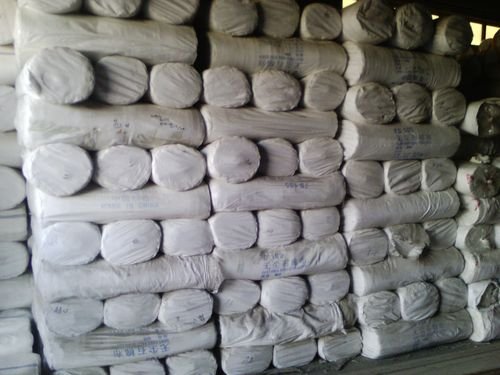
Blended fabrics are common in the textile industry, especially where performance, durability, and comfort need to be balanced. However, not all certifications treat blends equally. The requirements depend on how much of the blend consists of organic natural fibers, whether polyester is virgin or recycled, and the specific labeling rules of the standard.
OEKO-TEX allows all blends as long as the final product passes chemical residue testing, regardless of fiber ratios. GOTS, in contrast, requires ≥70% certified organic fibers for Label Grade 1 and *≥95% for Label Grade 2. Polyester can be included only if it is recycled and limited to a specific percentage of the final fabric composition.
A. Certification Rules for Blended Fabrics
| Standard | Minimum Organic % Requirement | Polyester Eligibility | Label Grades |
|---|---|---|---|
| OEKO-TEX Standard 100 | No organic % requirement | Virgin or recycled polyester allowed | No organic labeling system; purely chemical compliance |
| GOTS Label Grade 1 | ≥70% organic natural fibers | Recycled polyester <30% allowed | “Made with Organic Materials” |
| GOTS Label Grade 2 | ≥95% organic natural fibers | Recycled polyester <5% allowed | “Organic” |
Key Takeaway:
- OEKO-TEX is flexible, focusing solely on toxicological safety of the final product.
- GOTS is strict, requiring organic fiber dominance with very limited space for recycled polyester.
B. Case Study: U.S. Activewear Brand
A U.S. activewear brand tested both certifications for a 65% Organic Cotton + 35% Recycled Polyester blend:
- OEKO-TEX: Passed quickly, as chemical testing showed no harmful residues.
- GOTS: Approved only under Label Grade 1, since polyester content (35%) exceeded the maximum for Label Grade 2. The garments were marketed as “Made with Organic Materials”, but not “Organic”.
This case highlights the stricter fiber composition rules under GOTS and the need for brands to carefully manage blend ratios when targeting sustainability certifications.
C. Environmental Perspectives
- Criticism: Some NGOs argue that allowing recycled polyester in GOTS-certified textiles dilutes the organic purity of the standard, potentially confusing consumers.
- Defense: Brands counter that incorporating recycled polyester supports the circular economy, reducing reliance on virgin fossil-based inputs while maintaining performance qualities like stretch, durability, and moisture-wicking.
The debate reflects the tension between purist organic certification and practical sustainability innovation.
D. Consumer Perception Insights
Consumer surveys show interesting regional patterns:
- In Germany and Scandinavia, 65% of consumers preferred organic cotton-rich blends that also included certified recycled polyester, over 100% synthetic fabrics.
- These consumers accepted a 15–20% price premium, valuing both organic fiber content and recycled inputs.
- In fast-fashion markets, OEKO-TEX labels were considered sufficient, as buyers were more focused on safety and affordability than strict organic criteria.
E. Decision-Making Framework for Brands
| Brand Priority | Recommended Fiber & Certification Path | Rationale |
|---|---|---|
| Fast Market Entry, Low Cost | Polyester + OEKO-TEX | Quick approval; chemical safety assured |
| EU Retail Compliance, Eco Claims | Organic Cotton + GOTS | Strongest eco and ethical credentials |
| Balanced Cost + Eco Messaging | Organic Cotton/Recycled Poly + GOTS Label 1 | Meets sustainability goals with performance |
| Mass Market Fashion | Conventional Cotton + OEKO-TEX | Low barrier compliance at scale |
Blended fabrics can qualify under both OEKO-TEX and GOTS, but the certification paths differ sharply:
- OEKO-TEX: Approves any blend, focusing only on chemical safety.
- GOTS: Requires strict organic content thresholds (≥70% or ≥95%), with recycled polyester only allowed in limited percentages.
For brands, the choice depends on market positioning: pursuing OEKO-TEX for speed and scale, or GOTS for eco-sensitive markets where organic fiber dominance is a selling point.
Which Common Non-Conformances Trigger Failures for Cotton vs Polyester (Dyes, Auxiliaries, Finishes, Trims)?
In textile certification audits, failures usually stem from chemical non-compliance, documentation gaps, or restricted auxiliaries used in processing. Cotton and polyester have different failure risk profiles, reflecting their unique supply chains and finishing requirements. Cotton struggles with agricultural inputs and wet-processing residues, while polyester more often fails due to finishing treatments, especially water repellents.
The most frequent failures in OEKO-TEX come from formaldehyde in resins, heavy metals in dyes, and PFCs in water-repellent finishes. For GOTS, non-conformances are usually linked to incomplete transaction certificates, wastewater chemical residues, and unapproved auxiliaries. Cotton fabrics fail more often due to bleaching agents and organic certification gaps, whereas polyester failures are tied to durable water repellent (DWR) finishes with restricted fluorocarbons.
A. Top 5 Non-Conformance Causes by Fiber & Standard
| Standard | Cotton Failure Causes | Polyester Failure Causes |
|---|---|---|
| OEKO-TEX | Formaldehyde in easy-care finishes | PFCs in DWR coatings |
| Heavy metal traces in vat dyes | Non-compliant disperse dyes | |
| GOTS | Missing or incomplete transaction certificates | Not eligible unless recycled |
| High COD/BOD in wastewater | Chemical compliance gaps for recycled PET | |
| Both | Banned azo dyes, optical brighteners | Banned azo dyes, optical brighteners |
- Cotton: Bleaching (using chlorine or high-formaldehyde resins) and poor wastewater treatment create recurring compliance issues.
- Polyester: Restricted fluorochemicals in durable water repellent finishes and certain disperse dyes are common pitfalls.
B. Case Study: Indian Denim Mill
A large denim manufacturer in India faced GOTS audit delays due to:
- Use of unapproved auxiliaries in indigo dyeing.
- Incomplete wastewater test documentation.
Impact: Certification was delayed by 8 weeks, forcing the brand client to postpone its EU retail launch, illustrating how even paperwork lapses can have significant commercial consequences.
C. Certification Risk Mitigation Table
| Risk Factor | Prevention Strategy | Responsibility | Tools / Methods |
|---|---|---|---|
| Chemical Non-Compliance | Pre-approve dyes & auxiliaries via lab testing | Mill + Chemical Supplier | OEKO-TEX Eco Passport, ZDHC MRSL |
| Document Gaps | Digital TC (transaction certificate) tracking | Supplier + Brand Compliance | Blockchain / ERP Systems |
| Wastewater Residues | Upgrade ETPs, adopt closed-loop water systems | Mill Engineering Teams | GOTS Water Criteria Audits |
| PFCs in Finishes | Switch to fluorine-free DWR technologies | R&D + Brand Material Teams | bluesign® Chemical Database |
| Auditor Communication | Pre-audit checklists + staff training | Brand + Certification Body | Internal Audit Protocols |
D. Perspectives
- Brands: Some argue that internal lab testing before audits can reduce non-conformance rates by up to 50%, avoiding costly delays.
- Factories: Push back against overlapping standards (OEKO-TEX, GOTS, bluesign®), which sometimes test the same chemicals under slightly different limits.
- Certification Bodies: Stress that harmonizing restricted substance lists (MRSLs) would cut down audit fatigue and streamline compliance for mills and suppliers.
Key takeaway: Cotton’s weak points are chemicals from wet processing and paperwork gaps, while polyester risks lie in finishing chemicals like fluorocarbons. Proactive chemical pre-approval, digital documentation systems, and staff training are the most effective ways to prevent non-conformance.
How Should Brands Plan Certification Strategy (Roadmaps, Multi-Standard Stacks, Supplier KPIs) for Faster Approval?
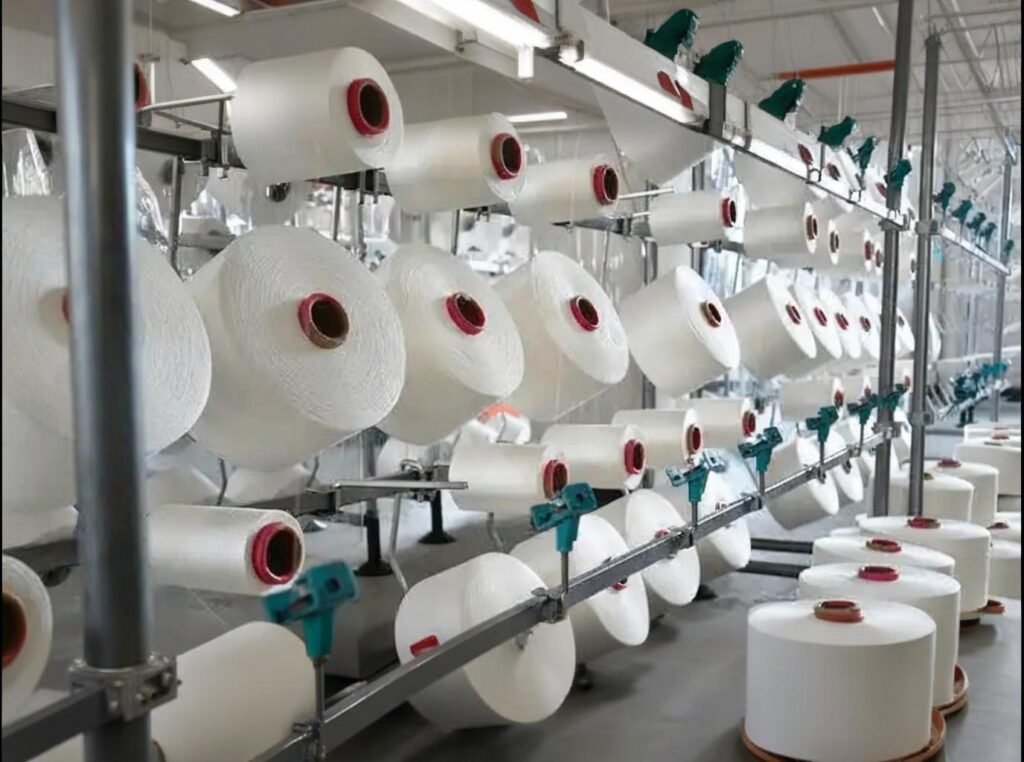
In today’s global textile market, speed to certification can make the difference between securing large retail contracts and losing them to competitors. The complexity of standards—ranging from GOTS for organic cotton to OEKO-TEX for chemical safety and GRS for recycled inputs—requires brands to carefully plan their certification strategy. This involves long-term roadmaps, cross-standard alignment, supplier engagement, and well-defined KPIs to monitor progress.
Brands should create 12–18 month certification roadmaps integrating supplier readiness checks, internal pre-audits, multi-standard alignment (e.g., GOTS + OEKO-TEX + GRS), and supplier KPIs for compliance timelines, chemical safety, and documentation accuracy.
A. Certification Roadmap Phases
A structured roadmap helps brands avoid delays and reduce compliance costs. Below is a recommended framework:
| Phase | Activities | Timeline | Deliverables |
|---|---|---|---|
| Supplier Pre-Screening | Check mill certifications, chemical policies | Month 1–2 | Approved Supplier List |
| Internal Pre-Audits | Test chemicals, review documentation | Month 3–4 | Pre-Audit Compliance Reports |
| Certification Alignment | Select standards: GOTS, OEKO-TEX, GRS | Month 5–6 | Multi-Standard Certification Plan |
| Audit & Corrective Actions | Official certification audits + CAP follow-up | Month 7–10 | CAP Closure Reports |
| Annual Review & Renewal | Re-certification audits, KPI tracking | Ongoing | Updated Certifications + Scorecards |
Insight: Brands that front-load with supplier pre-screening and pre-audits often cut approval time by 20–25%, as fewer corrective actions are required during the official audit.
B. Best-Practices Checklist for Brands
To achieve faster approval while ensuring compliance, brands should implement measurable KPIs across their supplier base.
| Area | Recommendation | KPI / Metric |
|---|---|---|
| Fiber Selection | Organic cotton for GOTS; recycled poly for OEKO-TEX | % Certified Fiber > 90% |
| Chemical Input Management | Use ZDHC MRSL-compliant auxiliaries | % Approved Chemicals = 100% |
| Documentation Control | Digital TC (Transaction Certificate) tracking systems | Audit Document Gaps = 0 |
| Supplier KPIs | On-time audit readiness, defect rates < 1% | Audit Readiness > 95% |
| Internal Training | Pre-audit workshops on chemicals & documentation | Training Coverage = 100% |
| Consumer Label Strategy | OEKO-TEX for speed; GOTS for eco-marketing | Retailer Acceptance Rate > 95% |
Key Benefit: Brands using digital TC tracking systems reduce documentation errors by 70%, which is a major reason for audit failures.
C. Real-World Example: EU Home Textiles Brand
An EU-based home textiles company faced 12–14 month certification cycles in the past. By introducing:
- A digital TC management system integrated with suppliers,
- Supplier scorecards tracking KPIs on chemical compliance and audit readiness,
they achieved GOTS certification in just 9 months. This not only accelerated their EU market approval but also provided a 20% faster launch cycle and a stronger eco-label marketing advantage against competitors.
D. Perspectives
- Retail Buyers: Increasingly expect multi-standard certification stacks (e.g., GOTS + OEKO-TEX + GRS) to satisfy both traceability and chemical safety requirements.
- Suppliers: Complain about overlapping paperwork, but multi-standard audits (combined visits) can reduce costs by 15–20%.
- Certification Bodies: Stress that continuous KPI monitoring (not just annual audits) is becoming the gold standard for compliance credibility.
A strategic roadmap, multi-standard alignment, and supplier KPI framework are essential for brands to achieve faster certification approval. By combining digital documentation tools, supplier training, and scorecard-driven accountability, brands can shorten certification cycles, reduce audit failures, and strengthen their eco-label marketing power in global markets.
Partner with Szoneier Fabrics for Certified, Sustainable Textiles
At Szoneier Fabrics, we combine organic cotton sourcing networks, recycled polyester capabilities, in-house labs, and audit-ready production systems to deliver fabrics that meet OEKO-TEX, GOTS, and GRS requirements across global markets. Our team manages documentation, chemical testing, and pre-audit training so brands can achieve certifications faster, with fewer risks and lower costs.
Ready to certify your fabrics with zero delays and full traceability? Contact Szoneier Fabrics today for free consultations, custom sampling, and certification-ready fabric solutions designed for global compliance success.
